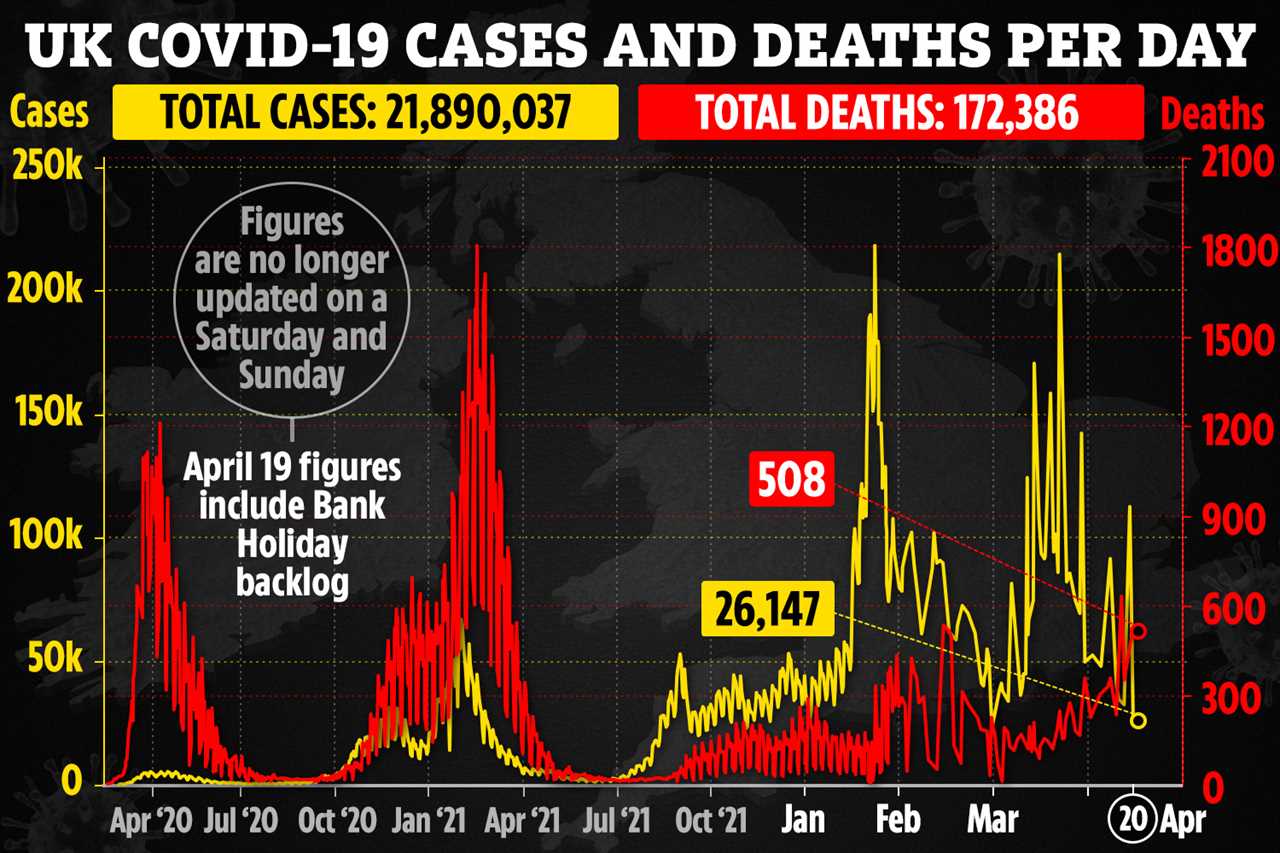PARENTS have been urged to be on the look out for Covid symptoms as children return to school following the Easter holidays.
As spring is now in full swing, experts have said common hay fever signs – like a runny nose – shouldn’t be mistaken for the virus.

It comes as scientists have warned that a new variant is set to become dominant in the UK.
Already 1,179 cases of the XE Covid strain have been found in the country since January.
But despite an uptick in cases of the variant, experts at the ZOE Symptom Tracker study said cases are still decreasing.
Lead study author Professor Tim Spector said the team has seen a 19 per cent fall on last week’s daily figures.
Read more on Covid-19
He said: “All the ages are coming down, pretty much in parallel but it’s really good to see the older ages, the over 75s starting to come down quite fast.
“Children who tend to drive all these waves are lower than some of the younger adults but it could be that after the Easter holidays these start to come back again as we’ve seen in previous peaks.”
While cases are high, Omicron is a milder variant than those that came before it.
The successful rollout of vaccines in the UK has meant that those who have had three vaccine shots have the most protection against Omicron.
Health officials are continuing to urge people to have their jabs and spring boosters are still being rolled out.
It comes as official government figures published yesterday revealed a 27 per cent decrease in cases on last week.
Prof Spector highlighted that one in 17 people now have Covid in the UK.
He added that this is a high level, but reasoned that there has also been a small decline in hospitalisations.
“Although they are still pretty high at around 2,000 a day, with hospitals as full as ever”, he said.
As the XE variant continues to be monitored, Prof Spector said that the pandemic is ‘far from over’.
He said if billions of people in China get new infections – that’s likely to spread around the globe again.
“We are currently monitoring rates to look out for potential new variants, because it’s six months since the last change – we got Omicron – we’ve seen small changes within Omicron but nothing dramatically new.










